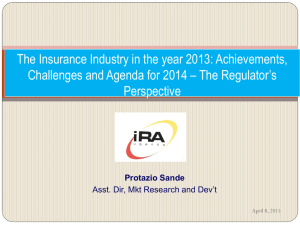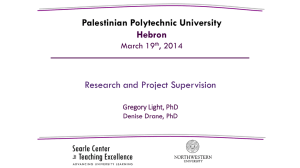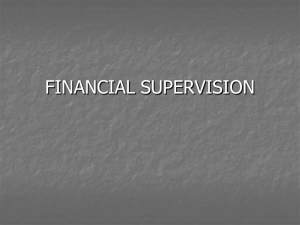Supervision - CTE - Online Learning Management System
advertisement
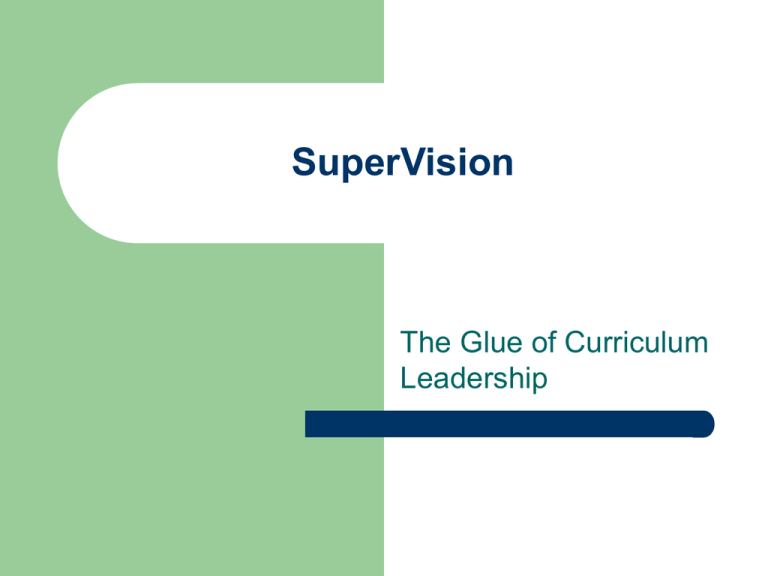
SuperVision The Glue of Curriculum Leadership SuperVision Supervision is Leadership Leadership is supervision School Types Conventional School – dependence, hierarchy, professional isolation Congenial School – friendly social interaction and professional isolation Collegial School – purposeful adult interaction about school-wide teaching and learning Which type of school is yours? What type of supervision do you have? - administrators? - department chairs? Paradigm Shift in Supervision Collegial rather than hierarchical relationship between teachers and supervisor. Supervision is province of teachers and supervisors. Focus on teacher growth rather than teacher compliance. Teacher collaboration in instructional improvement efforts is facilitated by supervisor Teacher is engaged in ongoing reflective inquire, best practices implementation, and action research. Why should we shift gears? SuperVision “ common vision of what teaching and learning can and should be, developed collaboratively by formally designated supervisors, teachers, and other members of the school community.” (Glickman, 2009) How would this work? What are the pitfalls? How do we monitor success? Supervision as Glue “the process by which some person or group is responsible for providing a link between individual teacher needs and organizational goals so that individuals in school can work in harmony toward their vision of what the school should be.” (Bernstein 2004) Who is the glue in your school? What impediments do your see to making the glue stick? SuperVision for Successful Schools Prerequisites Functions Tasks Unification Product Direct Assistance Knowledge Organizational Goals Group Development Professional Development Interpersonal Skills SuperVision as Development Technical Skills Improved Student Learning Teacher Needs Curriculum Development Action Research (Glickman,2009) Which elements are currently in place in your school? Why are schools the way they are? (One room schoolhouse is still present) Teacher isolation –physical & psychological Incessant psychological encounters Routine of teaching day – factory-like Inadequate new teacher induction – unstaged careers Unclear expectations Reality shock Environmental difficulties – survival mentality Inequity among schools Lack of shared technical culture – planning & performance standards Conservatism Effective Schools Research Edmonds (1979) Strong leadership Climate of expectations Orderly but not rigid atmosphere Communicate to students priority of learning the basics Use of school resources to maintain priorities Means of monitoring student & teachers achievement Austin & Reynolds (1990) Leadership, site management, staff stability & development Maximized learning time Recognition of academic success Parental involvement & support Collaborative planning & collegial relationships Sense of community Clear, commonly shared goals Order & discipline Effective Supervision It took five years for it to gel! (Local high school principal) Is developmental Sets priority on teambuilding Creates professional togetherness Shares a common purpose Believes collective action will make a difference Six Types of Teachers Irreplaceables - most talented, little chance of replacing, parent seek out, 5-10% of staff Wows – leads building-wide, positive, respected, positive effect on students, teacher of teachers Impacters – impact limited to students, loved by parents, willing to do extracurricular activities, staff jealous Six Types of Teachers – cont. The Solids - largest group of teachers, “yeomen” of staff, dependable, hardworking, good job most of the time, can be led to be better teachers , 80% Stabilizers – what you see is what you get, consistent in class or on field Dow Jonesers – variable performance, talent varies with task, peaks and valleys, run out of steam Six Types of Teachers – cont. The Replacement Level - bottom 5-10% of staff, barely in major leagues, easily replaced with better Harmless – not very good but not awful, few parent complaints, contributed little, audience for negative leaders Negative Force – “addition by subtraction”, school better without them, negative with kids, lots of griping, leavers a trace wherever they go (slug), draws others in. Six Types of Teachers Are there other categories of teachers? How do you determine which type of teachers you have in your building? What percentage of each type do you have – realistically? What do you do with each type to improve student achievement? When hiring, how do you identify the teacher type? With the Solids, what can you do to improve them?
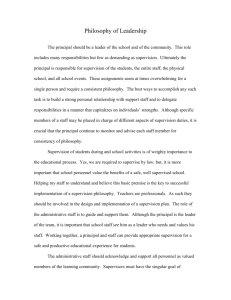




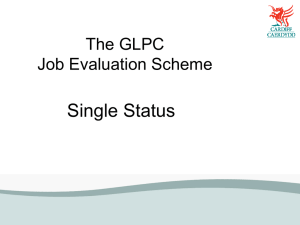
![Job Description - Program Director [1]](http://s3.studylib.net/store/data/005857458_1-3791b985859891a770a8c3867ad1e7d5-300x300.png)
